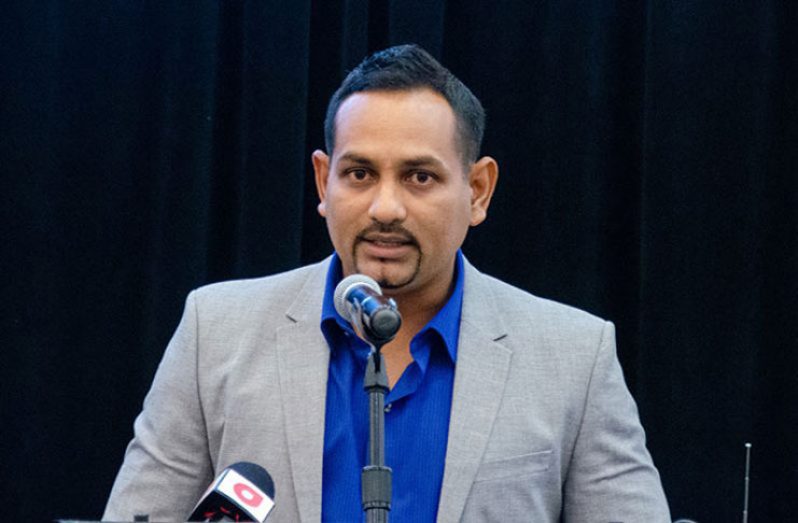…examining best practices for a new form of tourism
GUYANA’s phased reopening of airports has been postponed, more than once, due to the fluctuating threat of COVID-19 locally and abroad. Through it all, the tourism sector has been analysing each development and continues to seek out ways to adapt to the circumstances and the new form that tourism will take on.
In an interview with the Guyana Chronicle on Friday, President of the Tourism and Hospitality Association Guyana (THAG), Mitra Ramkumar, presented an update on how the sector was managing, given the push of Phase Two of the reopening from July 1 to late August, 2020.
He said that while the repatriation flights to Guyana have been bringing home hundreds of Guyanese, primarily from North America, the outgoing flights take foreign nationals with them, reducing even further the low numbers at hotels, lodges and guest houses.
“Even the persons that we were looking to target, which would be the expatriates that are here to work in the oil and gas sector, a lot of them went home. So, the pool has decreased but the oil and gas sector is still operating, so there are still a few in the country,” he said.
“The occupancy rate is barely double digit; in a lot of places, it is single digit. Many of the small hotels are closed and, even the big ones, I would say they’re around 15 to 20 per cent maximum [occupancy].”
The THAG President said that the sector understands that the virus isn’t going anywhere for now and that tourism businesses will therefore have to adapt in order to survive. Many business owners have been using the downtime to renovate their establishments but this is not enough.
Ramkumar said that stakeholders have a plan in the works for a widescale collaboration in the establishment of COVID-19 kits and business Standard Operating Procedures (SOPs) which would enable most, if not all tourism businesses in Guyana, to operate at the same level of efficiency.
He said that this unison is key as tourists are not likely to determine whether they should visit a country based on the standards of just one business, but tourism businesses in the collective.
THAG has also turned its attention, internationally, to see what are the best practices being implemented at restaurants and hotels for the safest and most enjoyable experience for visitors.
“The most important thing is safety. We want to instill confidence in people that if they come to Guyana it’s going to be safe and, wherever they go, which ever lodge, or resort or hotel or restaurant, these procedures are adhered to across the board,” he said, adding:
“This virus is not going to go anywhere. We have to learn and live alongside this virus so, what we need to do is to ensure we have robust procedures and protocols in place.”
Ramkumar believes that, with Guyana’s main focus on eco-tourism, it will not be difficult for the country to manage physical distancing at many destinations as opposed to other countries accustomed to large crowds.
He said: “Working with the GTA (Guyana Tourism Authority) as soon as we’re able to re-open we want to launch a domestic tourism package which is something like a Resort Week like how we have Restaurant Week. It’s going to last for about three months where we encourage locals to come out and travel and see Guyana, at reduced prices, of course.”
The tourism sector continues to adhere to the guidelines of the Pan American Health Organization/World Health Organization (PAHO/WHO) and the Ministry of Public Health (MOPH).
They look forward to the re-opening of Guyana’s ports to international visitors at a time when such is advisable by Public Health Authorities. THAG also looks forward to the resumption of work on the planned construction of a state-of-the-art hospitality institute in Guyana.
The proposed design for the institute was last presented in May 2019 receiving good reception. The Institute is expected to be constructed at Providence on the East Bank of Demerara (EBD), on a 2.5-acre plot of land.
It is being funded through collaboration between the Caribbean Development Bank (CDB) and the Government of Guyana, and is being constructed in response to the growing demand for services in the hospitality sector in Guyana.
As Guyana emerges from the COVID-19 experience towards a hopeful end, the THAG President said that much has been learnt about the usefulness of distance learning and efforts will be put in place to ensure the institute caters for this.
“What a lot of people are doing now is going virtual and so the institute’s model definitely needs to be relooked at, with the realities of Guyana as well. Not a lot of people have access to do it remotely and those are the people we want to target; we want to get those people working and into the industry,” he said.




.jpg)










